BLOG

Architectural Styles Explained: A Guide for Homeowners
Introduction to Architectural Styles
What is Architectural Style?
Architectural style refers to the unique characteristics and design elements that define a building's structure and aesthetics, encompassing visual, structural, and functional aspects that distinguish one building type from another. Think of architectural styles as the clothing your home wears—they set the mood, atmosphere, and personality of the structure. From the bold columns of a Greek Revival to the sleek lines of a modernist home, architectural styles can evoke emotions, cultural identity, and nostalgia.
While most people aren't always conscious of it, architecture affects how we feel in a space. A towering cathedral invokes awe, while a cosy Craftsman home might make you feel welcome and at ease. Architectural styles aren't just about looks; they influence the layout, how natural light enters a space, and even how air circulates. Homes, for example, are more than just walls and roofs. They represent a fusion of history, art, and personal identity. Understanding these styles as a homeowner can help you create a functional space that reflects your unique taste.
The Importance of Knowing Architectural Styles as a Homeowner
Why should homeowners care about architectural styles? Imagine buying a home because it "looked nice," only to discover its layout doesn't fit your lifestyle. Understanding architectural styles can help you make informed decisions about a property—whether you're buying, building, or renovating.
For instance:
Resale Value: Some styles, like the Craftsman, tend to maintain high value due to their timeless appeal.
Functionality: A modern minimalist home might only work for a small family seeking warmth and tradition.
Aesthetic Consistency: Renovating a Colonial home with ultra-modern elements could reduce its charm and, thus, its value.
So, whether you're selecting a new home or planning a renovation, knowing architectural styles can prevent costly mistakes and enhance your living experience.
How Architectural Styles Evolved Over Time
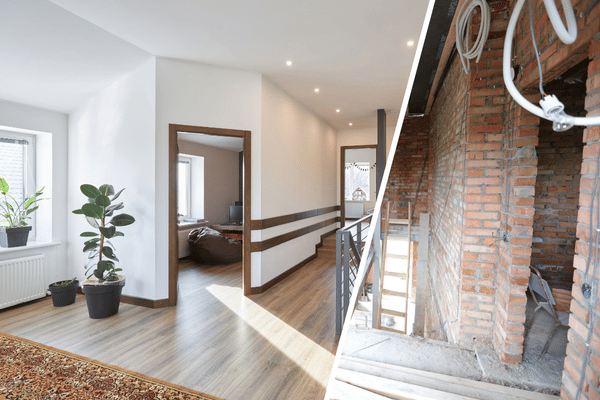
Architectural styles are deeply rooted in cultural, political, and technological changes. Ancient Egyptian architecture focused on grandeur and the divine. At the same time, the Romans introduced engineering feats like the arch, which would later be adapted into everything from Gothic cathedrals to modern skyscrapers. Fast-forward to the 20th Century, and you'll notice that modern architecture began embracing simplicity and functionality—eschewing the overly ornate designs of the past.
The Victorian era gave birth to ornate, elaborate homes full of gingerbread trim and eccentric detail.
The Modernist movement rebelled against this, opting for clean lines and minimalism, emphasising "form follows function."
Today, the lines between different styles blur as architects pull from various eras to create functional and unique homes.
Why Choose the Right Style for Your Home?
Choosing the right architectural style can make a huge difference, not only in terms of aesthetics but also in the experience of living in the home. You wouldn't wear a tuxedo to a beach, so why would you pick an ultra-modern, glass-heavy home in a quaint, historic neighbourhood? The architectural style should fit both your lifestyle and the environment around it. Besides, when you pick a style that resonates with you, your home becomes more than just a place to live—it becomes an extension of who you are.
Classical Architectural Styles
Greek Revival: The Legacy of Antiquity
Greek Revival architecture is all about grandeur and symmetry. Popular in the early 19th Century, this style took inspiration from—you guessed it—ancient Greece. Giant columns, often fluted and topped with dramatic capitals, are critical features of this style. It's not just about looking majestic, though. Greek Revival homes were usually meant to symbolise democracy, education, and enlightenment, making them popular for institutions like libraries and courthouses.
Greek Revival homes often feature:
Tall columns that mimic ancient Greek temples
Symmetrical facades evoke a sense of order and balance.
Pediments over doors and windows that create solid visual interest
Bold white or pale colours mimicking marble
Neoclassical: The Harmony of Proportions
Neoclassical architecture arose as a reaction to the elaborate Baroque and Rococo styles of the previous centuries. It sought to return to the classical ideals of symmetry, simplicity, and proportion. The result? Homes that feel stately and calm, with columns and porticos that evoke images of ancient Rome and Greece.
Colonial: The Foundations of American Homes

Colonial architecture originated in the 17th Century and is a staple of American design. These homes are generally two stories tall and rectangular, with symmetrical facades and gabled roofs. Shutters, dormers, and chimneys are standard features, giving these homes a timeless, quaint feel.
Colonial homes often feature:
Symmetrical facades, making them pleasing to the eye
Gabled roofs for a classic, traditional look
Multi-pane windows that add character and charm
Centered front doors flanked by columns or sidelights
Victorian: Ornate and Elaborate Homes of the Past
If you've ever seen a house that looks straight out of a storybook, it's probably a Victorian. These homes were built during Queen Victoria's reign and are known for their intricate details, decorative trims, and steep, gabled roofs. Think turrets, gingerbread trim, and wraparound porches.
Victorian homes typically feature:
Asymmetrical designs with towers, turrets, or bay windows
Intricate woodwork and detailed trims
Colourful facades, often in contrasting tones
Decorative porches that invite relaxation
Modern Architectural Styles
Mid-Century Modern: The Intersection of Form and Function
Mid-Century Modern is about simplicity, functionality, and a solid connection to nature. This style emerged in the 1950s and is known for its clean lines, large windows, and open floor plans. Forget unnecessary ornamentation—the focus here is on the materials and how the structure interacts with its surroundings.
Bauhaus: Minimalist, Functional, and Revolutionary
The Bauhaus style originated in Germany in the early 20th Century and revolutionised architectural thinking. The mantra "less is more" comes into play here, emphasising functionality, clean lines, and industrial materials like steel and glass. Bauhaus homes are geometric and minimal, often featuring flat roofs and large, open spaces that allow flexibility.
I will continue writing this blog in the next part, covering modern and popular residential architectural styles, their resale impact, and the future of home design. Stay tuned!
International Style: The Global Influence on Modern Homes
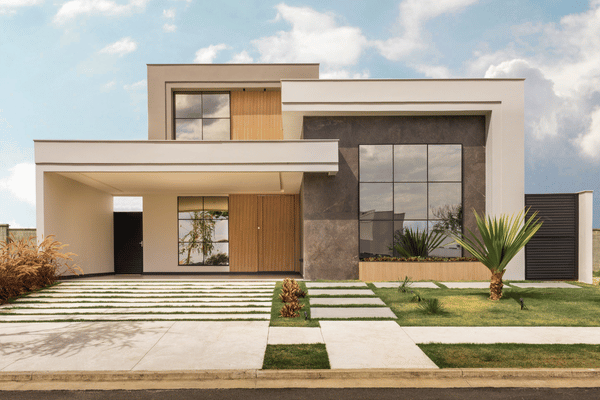
The International Style emerged during the 1920s and 1930s, rooted in the modernist movement and characterised by simplicity and functionality. Unlike traditional architectural styles tied to a specific region or culture, the International Style sought to transcend borders, creating buildings that were functional, minimalist, and global in appeal. This style is defined by its use of modern materials like steel and glass, flat roofs, and an emphasis on horizontal lines. The buildings often feel weightless, with large open spaces and a lack of ornamentation.
Key features of the International Style include:
Flat roofs that emphasise clean lines and simplicity.
Open floor plans designed to promote flexibility and space.
Extensive use of glass allows for natural light and connects indoor and outdoor spaces.
Lack of ornamentation, focusing on the purity of form.
This style was notably used in the design of skyscrapers and office buildings. Still, it also found its way into residential architecture, especially in urban settings. It symbolises a break from the past, embracing the idea that form should always follow function.
Contemporary: Blurring the Line Between Art and Architecture
Contemporary architecture often needs to be clarified with modern architecture. Still, while modernism refers to a specific era, contemporary architecture refers to current trends. What makes contemporary architecture so fascinating is its eclectic nature. It borrows from the past, looks to the future, and incorporates elements from different styles, materials, and technologies. These homes are often designed sustainably, featuring green roofs, solar panels, and other eco-friendly solutions.
Contemporary homes often have:
Asymmetrical facades with bold geometric shapes.
Natural materials like wood, stone, and glass are used innovatively.
Large windows create a seamless transition between indoor and outdoor spaces.
Sustainability features like energy-efficient systems and renewable materials.
These homes are designed to reflect the personality and needs of the homeowner, often featuring open floor plans, custom designs, and advanced technologies like smart home systems. While contemporary architecture doesn't stick to any single design language, its adaptability and focus on modern living make it a popular choice in today's market.
Popular Residential Architectural Styles in the 21st Century
Craftsman: Simple, Cozy, and Durable
The Craftsman style has made a strong resurgence recently, appealing to homeowners who value quality craftsmanship and simple elegance. Originating in the early 20th Century, this style emphasises hand-made details, natural materials, and a solid connection to nature. It's the antithesis of mass-produced homes, focusing on solid construction and thoughtful design.
Craftsman homes typically feature:
Low-pitched gable roofs with wide, overhanging eaves.
Exposed wooden beams and detailed woodwork.
Thick, tapered columns often support large front porches.
Natural materials like wood, stone, and brick.
The interior of a Craftsman home is often cosy, with built-in furniture, nooks, and an open living area that revolves around a central fireplace. These homes are ideal for those who appreciate timeless charm and craftsmanship over flashy, modern design.
Ranch: The Practical American Dream
The ranch-style home was born post-World War II and quickly symbolised the American dream. Known for its single-story layout and sprawling design, the Ranch style is perfect for suburban living. These homes are practical, with open floor plans and large windows that create a bright, airy atmosphere.
Ranch homes often have:
Long, low profiles blend into the landscape.
Open floor plans, making them ideal for family living.
Large windows and sliding glass doors let in plenty of natural light.
Attached garages reflecting the rise of car culture in the mid-20th Century.
Ranch homes' simplicity and efficiency appeal to many homeowners, especially those who value accessibility and ease of maintenance.
Tudor Revival: Storybook Charm with European Influence
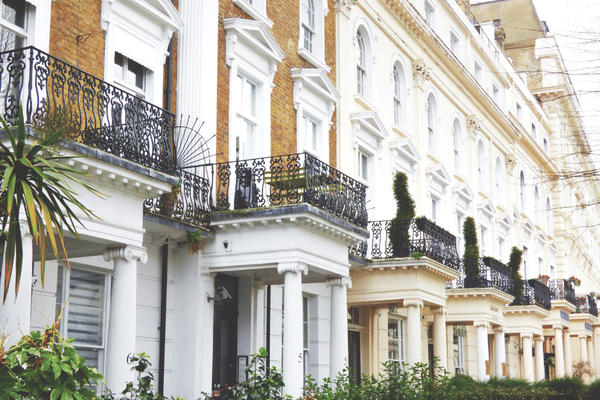
Tudor Revival homes are charming, with steeply pitched roofs, decorative half-timbering, and medieval-inspired design elements. These homes evoke the fairytale cottages of the English countryside, making them a popular choice for those who love old-world charm. Although Tudor Revival homes saw their peak in popularity during the early 20th Century, they remain a desirable style today.
Features of Tudor Revival homes include:
Steeply pitched roofs, often with multiple gables.
Exposed half-timbering, providing a distinctive storybook look.
Tall, narrow windows with small panes.
Massive chimneys, often with decorative chimney pots.
Tudor Revival homes are perfect for homeowners who want their house to stand out with unique, historic detailing and a cosy, cottage-like atmosphere.
Modern Farmhouse: The Blend of Rustic and Modern
The Modern Farmhouse style has become incredibly popular in recent years. It combines the rustic charm of a traditional farmhouse with the clean lines and simplicity of modern design. This style offers the best of both worlds, with open floor plans, large windows, and natural materials, but with a sleek, contemporary twist.
Modern Farmhouse homes often feature:
Gabled roofs with simple, clean lines.
White or light-coloured exteriors, often accented with dark trim.
Large, open kitchens, usually with a central island.
Shiplap walls evoke a rustic countryside feel.
The focus is creating a comfortable, open living space that feels homey and modern. The combination of old and new makes the Modern Farmhouse an excellent choice for homeowners who want a fresh yet familiar style.
How to Choose the Right Architectural Style for Your Home
Understanding Your Personal Aesthetic
Choosing an architectural style for your home is like choosing an outfit that reflects your personality. Do you prefer clean, minimalist designs or gravitate towards something more traditional and ornate? Your home should reflect your aesthetic, making you feel comfortable and inspired whenever you walk through the door.
Consider the following when choosing your style:
Do you prefer modern or traditional design?
Do you want your home to blend into the environment or stand out?
What materials do you love—wood, glass, stone?
How do you want your home to feel—cosy, grand, minimalist?
Considering Your Home's Location
The environment in which your home is located plays a crucial role in determining the right architectural style. A sleek, modern glass home might feel out of place in a quaint, historic neighbourhood, just as a Tudor Revival home might clash with a contemporary urban setting.
Some key factors to consider include:
Climate: Does your chosen style suit the weather? For instance, a Mediterranean-style home might not be suitable for colder climates.
Neighbourhood: Does the architectural style complement or clash with the surrounding homes?
Natural surroundings: Does the home's style blend with the landscape or create a jarring contrast?
Balancing Functionality with Aesthetics
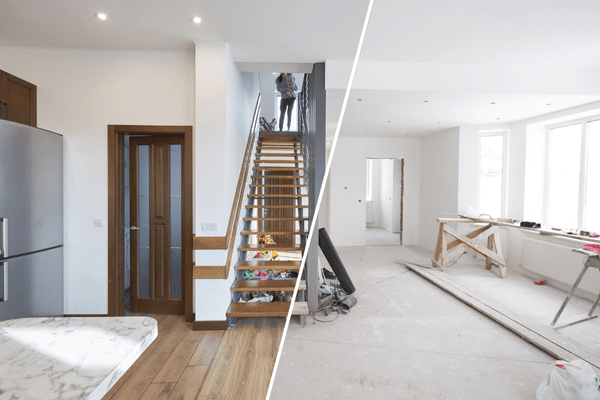
A beautiful home is essential, but it should also be functional. If you have a large family, a minimalist, open-concept home may not provide the warmth and intimacy you desire. On the other hand, if you value clean lines and a clutter-free lifestyle, a more ornate, traditional style might feel overwhelming.
Consider the following:
How do you use your home? Do you entertain frequently? Do you need space for children to play?
What are your priorities? Do you care more about aesthetics, or is functionality more important?
Can the style accommodate future changes? Is it adaptable enough to meet your evolving needs?
Budget Considerations for Each Architectural Style
Different architectural styles come with varying costs. A minimalist, modern home may require expensive materials like steel and glass. In contrast, a Craftsman home might be more affordable but require skilled labour for detailed woodwork.
Some styles are more cost-effective than others:
Ranch homes tend to be budget-friendly due to their simple, single-story layout.
Victorian homes, with intricate details and steeply pitched roofs, can be costly to build and maintain.
Modern homes may require high-tech materials and systems, which can add to the cost.
How Architectural Styles Impact Home Value and Resale Potential
The Market Appeal of Different Architectural Styles
Architectural style can significantly impact resale value. Some styles have broad appeal and tend to maintain their value over time, while others may be more niche or subject to changing trends.
For example:
Craftsman homes have a timeless appeal and often attract buyers due to their sturdy construction and classic design.
Modern homes are in demand, especially in urban areas where sleek, minimalist designs are popular.
Victorian homes may have a smaller pool of potential buyers, as their elaborate design is only for some.
Resale Value: Which Styles Attract the Most Buyers?
Certain architectural styles consistently attract buyers due to their enduring popularity. These include:
Craftsman: Known for its charm and quality, this style often appeals to buyers looking for a home with character.
Ranch: The single-story layout is particularly appealing to retirees and young families.
Modern Farmhouse: With its rustic charm and contemporary design blend, this style has skyrocketed in popularity.
Renovation Challenges for Older Architectural Styles

While older architectural styles like Victorian or Tudor Revival can be incredibly charming, renovation is often challenging. The materials and techniques used in these homes are often outdated, and modernising them while preserving their character can be costly.
Challenges include:
Finding skilled craftsmen who can replicate the original details.
Maintaining historical accuracy which can limit your options for modernisation.
Higher renovation costs due to the need for specialised materials and labour.
How a Cohesive Style Can Boost Your Home's Market Value
Consistency is vital when it comes to architectural style. A home that maintains a cohesive style appeals more to buyers as it creates a sense of harmony and thoughtfulness. On the other hand, a home that mixes too many styles can feel disjointed and may have less market appeal.
The Future of Residential Architecture
Sustainability in Modern Architecture
As environmental concerns continue to grow, sustainability is becoming a significant focus in residential architecture. Homeowners are increasingly looking for homes that are energy-efficient, environmentally friendly, and built with sustainable materials, leading to the rise of green building practices and eco-friendly designs.
Sustainable homes may include:
Solar panels and other renewable energy sources.
Green roofs help insulate the home and provide a natural habitat.
Sustainable materials like bamboo, reclaimed wood, and recycled metal.
The Rise of Smart Homes and Technological Integration
Technology is ever-increasing in modern architecture, and smart homes are becoming more common. These homes feature integrated systems that allow homeowners to control everything from lighting to security with the touch of a button—or even their voice.
Examples of smart home technology include:
Smart thermostats that learn your schedule and adjust the temperature accordingly.
Automated lighting systems that can be controlled remotely or set to change based on the time of day.
Security systems with cameras and sensors that can be monitored from your smartphone.
The Rise of Smart Homes and Technological Integration
Technology is ever-increasing in modern architecture, and smart homes are becoming more common. These homes feature integrated systems that allow homeowners to control everything from lighting to security with the touch of a button—or even their voice.
Examples of smart home technology include:
Smart thermostats that learn your schedule and adjust the temperature accordingly.
Automated lighting systems that can be controlled remotely or set to change based on the time of day.
Security systems with cameras and sensors that can be monitored from your smartphone.
Customisation and Personalisation Trends
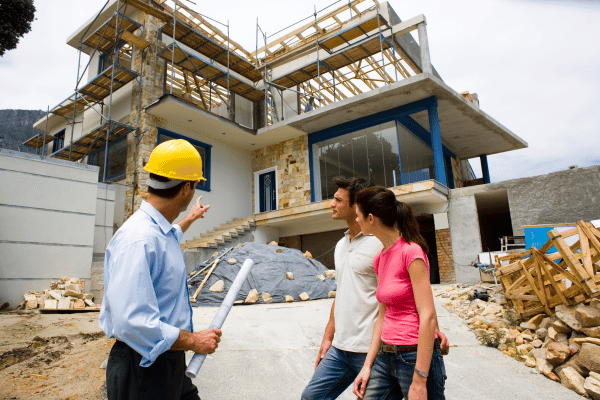
Today's homeowners are looking for homes that reflect their tastes and lifestyles. This has led to a trend of customisation, with architects and builders offering more personalisation options than ever before.
Popular customisation options include:
Open floor plans that can be adapted to suit the homeowner's needs.
Flexible spaces that can serve multiple functions, such as a home office that doubles as a guest room.
Unique finishes and materials that allow homeowners to express their style.
Adapting Traditional Styles to Modern Living
While modern and contemporary styles are popular, many homeowners still appreciate the charm of traditional architecture. However, these older styles are often adapted to meet the demands of modern living. For example, a Tudor Revival home might be updated with modern amenities like open floor plans, large windows, and energy-efficient systems while maintaining its historical charm.
Conclusion
Understanding architectural styles is not just about appreciating the beauty and history of different designs—it's about making informed decisions as a homeowner. Whether you're building your dream home, renovating an existing property, or simply looking for inspiration, knowing the strengths and characteristics of various architectural styles can help guide your choices.
The architectural style you choose will affect not only the look of your home but also its functionality, market value, and resale potential. From the classic elegance of Greek Revival to the modern simplicity of Bauhaus, each style has something unique to offer. By understanding the history and features of these styles, you can create a home that is not only beautiful but also a reflection of your personality and lifestyle.
FAQs
1. What are the main factors to consider when choosing an architectural style for my home?
When selecting an architectural style, consider your personal aesthetic preferences, the climate and environment where your home is located, functionality, and your budget. It’s also important to ensure the style complements the surrounding neighbourhood and meets your long-term lifestyle needs.
2. How do architectural styles impact the cost of building a home?
The cost varies depending on the complexity of the design, the materials required, and the craftsmanship involved. Styles like Victorian or Tudor Revival may require more detailed work and expensive materials, while modern or Ranch styles tend to be more budget-friendly due to their simplicity.
3. Can I blend different architectural styles in one home?
Yes, blending styles can create a unique and personalized design. However, it’s important to maintain a cohesive balance to avoid a disjointed appearance. Working with an architect can help ensure that the fusion of styles feels intentional and harmonious.
4. Which architectural styles are best for energy efficiency?
Modern and contemporary architectural styles often incorporate energy-efficient designs, such as large windows for natural light, solar panels, and sustainable materials. Green roofs, passive solar heating, and energy-efficient insulation are common features in eco-friendly designs.
5. Do certain architectural styles increase a home's resale value?
Yes, styles with broad appeal like Craftsman, Ranch, and Modern tend to attract more buyers and maintain higher resale values. A well-maintained, cohesive architectural style can enhance curb appeal and marketability, especially in desirable neighbourhoods.

Architectural Styles Explained: A Guide for Homeowners
Introduction to Architectural Styles
What is Architectural Style?
Architectural style refers to the unique characteristics and design elements that define a building's structure and aesthetics, encompassing visual, structural, and functional aspects that distinguish one building type from another. Think of architectural styles as the clothing your home wears—they set the mood, atmosphere, and personality of the structure. From the bold columns of a Greek Revival to the sleek lines of a modernist home, architectural styles can evoke emotions, cultural identity, and nostalgia.
While most people aren't always conscious of it, architecture affects how we feel in a space. A towering cathedral invokes awe, while a cosy Craftsman home might make you feel welcome and at ease. Architectural styles aren't just about looks; they influence the layout, how natural light enters a space, and even how air circulates. Homes, for example, are more than just walls and roofs. They represent a fusion of history, art, and personal identity. Understanding these styles as a homeowner can help you create a functional space that reflects your unique taste.
The Importance of Knowing Architectural Styles as a Homeowner
Why should homeowners care about architectural styles? Imagine buying a home because it "looked nice," only to discover its layout doesn't fit your lifestyle. Understanding architectural styles can help you make informed decisions about a property—whether you're buying, building, or renovating.
For instance:
Resale Value: Some styles, like the Craftsman, tend to maintain high value due to their timeless appeal.
Functionality: A modern minimalist home might only work for a small family seeking warmth and tradition.
Aesthetic Consistency: Renovating a Colonial home with ultra-modern elements could reduce its charm and, thus, its value.
So, whether you're selecting a new home or planning a renovation, knowing architectural styles can prevent costly mistakes and enhance your living experience.
How Architectural Styles Evolved Over Time

Architectural styles are deeply rooted in cultural, political, and technological changes. Ancient Egyptian architecture focused on grandeur and the divine. At the same time, the Romans introduced engineering feats like the arch, which would later be adapted into everything from Gothic cathedrals to modern skyscrapers. Fast-forward to the 20th Century, and you'll notice that modern architecture began embracing simplicity and functionality—eschewing the overly ornate designs of the past.
The Victorian era gave birth to ornate, elaborate homes full of gingerbread trim and eccentric detail.
The Modernist movement rebelled against this, opting for clean lines and minimalism, emphasising "form follows function."
Today, the lines between different styles blur as architects pull from various eras to create functional and unique homes.
Why Choose the Right Style for Your Home?
Choosing the right architectural style can make a huge difference, not only in terms of aesthetics but also in the experience of living in the home. You wouldn't wear a tuxedo to a beach, so why would you pick an ultra-modern, glass-heavy home in a quaint, historic neighbourhood? The architectural style should fit both your lifestyle and the environment around it. Besides, when you pick a style that resonates with you, your home becomes more than just a place to live—it becomes an extension of who you are.
Classical Architectural Styles
Greek Revival: The Legacy of Antiquity
Greek Revival architecture is all about grandeur and symmetry. Popular in the early 19th Century, this style took inspiration from—you guessed it—ancient Greece. Giant columns, often fluted and topped with dramatic capitals, are critical features of this style. It's not just about looking majestic, though. Greek Revival homes were usually meant to symbolise democracy, education, and enlightenment, making them popular for institutions like libraries and courthouses.
Greek Revival homes often feature:
Tall columns that mimic ancient Greek temples
Symmetrical facades evoke a sense of order and balance.
Pediments over doors and windows that create solid visual interest
Bold white or pale colours mimicking marble
Neoclassical: The Harmony of Proportions
Neoclassical architecture arose as a reaction to the elaborate Baroque and Rococo styles of the previous centuries. It sought to return to the classical ideals of symmetry, simplicity, and proportion. The result? Homes that feel stately and calm, with columns and porticos that evoke images of ancient Rome and Greece.
Colonial: The Foundations of American Homes

Colonial architecture originated in the 17th Century and is a staple of American design. These homes are generally two stories tall and rectangular, with symmetrical facades and gabled roofs. Shutters, dormers, and chimneys are standard features, giving these homes a timeless, quaint feel.
Colonial homes often feature:
Symmetrical facades, making them pleasing to the eye
Gabled roofs for a classic, traditional look
Multi-pane windows that add character and charm
Centered front doors flanked by columns or sidelights
Victorian: Ornate and Elaborate Homes of the Past
If you've ever seen a house that looks straight out of a storybook, it's probably a Victorian. These homes were built during Queen Victoria's reign and are known for their intricate details, decorative trims, and steep, gabled roofs. Think turrets, gingerbread trim, and wraparound porches.
Victorian homes typically feature:
Asymmetrical designs with towers, turrets, or bay windows
Intricate woodwork and detailed trims
Colourful facades, often in contrasting tones
Decorative porches that invite relaxation
Modern Architectural Styles
Mid-Century Modern: The Intersection of Form and Function
Mid-Century Modern is about simplicity, functionality, and a solid connection to nature. This style emerged in the 1950s and is known for its clean lines, large windows, and open floor plans. Forget unnecessary ornamentation—the focus here is on the materials and how the structure interacts with its surroundings.
Bauhaus: Minimalist, Functional, and Revolutionary
The Bauhaus style originated in Germany in the early 20th Century and revolutionised architectural thinking. The mantra "less is more" comes into play here, emphasising functionality, clean lines, and industrial materials like steel and glass. Bauhaus homes are geometric and minimal, often featuring flat roofs and large, open spaces that allow flexibility.
I will continue writing this blog in the next part, covering modern and popular residential architectural styles, their resale impact, and the future of home design. Stay tuned!
International Style: The Global Influence on Modern Homes

The International Style emerged during the 1920s and 1930s, rooted in the modernist movement and characterised by simplicity and functionality. Unlike traditional architectural styles tied to a specific region or culture, the International Style sought to transcend borders, creating buildings that were functional, minimalist, and global in appeal. This style is defined by its use of modern materials like steel and glass, flat roofs, and an emphasis on horizontal lines. The buildings often feel weightless, with large open spaces and a lack of ornamentation.
Key features of the International Style include:
Flat roofs that emphasise clean lines and simplicity.
Open floor plans designed to promote flexibility and space.
Extensive use of glass allows for natural light and connects indoor and outdoor spaces.
Lack of ornamentation, focusing on the purity of form.
This style was notably used in the design of skyscrapers and office buildings. Still, it also found its way into residential architecture, especially in urban settings. It symbolises a break from the past, embracing the idea that form should always follow function.
Contemporary: Blurring the Line Between Art and Architecture
Contemporary architecture often needs to be clarified with modern architecture. Still, while modernism refers to a specific era, contemporary architecture refers to current trends. What makes contemporary architecture so fascinating is its eclectic nature. It borrows from the past, looks to the future, and incorporates elements from different styles, materials, and technologies. These homes are often designed sustainably, featuring green roofs, solar panels, and other eco-friendly solutions.
Contemporary homes often have:
Asymmetrical facades with bold geometric shapes.
Natural materials like wood, stone, and glass are used innovatively.
Large windows create a seamless transition between indoor and outdoor spaces.
Sustainability features like energy-efficient systems and renewable materials.
These homes are designed to reflect the personality and needs of the homeowner, often featuring open floor plans, custom designs, and advanced technologies like smart home systems. While contemporary architecture doesn't stick to any single design language, its adaptability and focus on modern living make it a popular choice in today's market.
Popular Residential Architectural Styles in the 21st Century
Craftsman: Simple, Cozy, and Durable
The Craftsman style has made a strong resurgence recently, appealing to homeowners who value quality craftsmanship and simple elegance. Originating in the early 20th Century, this style emphasises hand-made details, natural materials, and a solid connection to nature. It's the antithesis of mass-produced homes, focusing on solid construction and thoughtful design.
Craftsman homes typically feature:
Low-pitched gable roofs with wide, overhanging eaves.
Exposed wooden beams and detailed woodwork.
Thick, tapered columns often support large front porches.
Natural materials like wood, stone, and brick.
The interior of a Craftsman home is often cosy, with built-in furniture, nooks, and an open living area that revolves around a central fireplace. These homes are ideal for those who appreciate timeless charm and craftsmanship over flashy, modern design.
Ranch: The Practical American Dream
The ranch-style home was born post-World War II and quickly symbolised the American dream. Known for its single-story layout and sprawling design, the Ranch style is perfect for suburban living. These homes are practical, with open floor plans and large windows that create a bright, airy atmosphere.
Ranch homes often have:
Long, low profiles blend into the landscape.
Open floor plans, making them ideal for family living.
Large windows and sliding glass doors let in plenty of natural light.
Attached garages reflecting the rise of car culture in the mid-20th Century.
Ranch homes' simplicity and efficiency appeal to many homeowners, especially those who value accessibility and ease of maintenance.
Tudor Revival: Storybook Charm with European Influence

Tudor Revival homes are charming, with steeply pitched roofs, decorative half-timbering, and medieval-inspired design elements. These homes evoke the fairytale cottages of the English countryside, making them a popular choice for those who love old-world charm. Although Tudor Revival homes saw their peak in popularity during the early 20th Century, they remain a desirable style today.
Features of Tudor Revival homes include:
Steeply pitched roofs, often with multiple gables.
Exposed half-timbering, providing a distinctive storybook look.
Tall, narrow windows with small panes.
Massive chimneys, often with decorative chimney pots.
Tudor Revival homes are perfect for homeowners who want their house to stand out with unique, historic detailing and a cosy, cottage-like atmosphere.
Modern Farmhouse: The Blend of Rustic and Modern
The Modern Farmhouse style has become incredibly popular in recent years. It combines the rustic charm of a traditional farmhouse with the clean lines and simplicity of modern design. This style offers the best of both worlds, with open floor plans, large windows, and natural materials, but with a sleek, contemporary twist.
Modern Farmhouse homes often feature:
Gabled roofs with simple, clean lines.
White or light-coloured exteriors, often accented with dark trim.
Large, open kitchens, usually with a central island.
Shiplap walls evoke a rustic countryside feel.
The focus is creating a comfortable, open living space that feels homey and modern. The combination of old and new makes the Modern Farmhouse an excellent choice for homeowners who want a fresh yet familiar style.
How to Choose the Right Architectural Style for Your Home
Understanding Your Personal Aesthetic
Choosing an architectural style for your home is like choosing an outfit that reflects your personality. Do you prefer clean, minimalist designs or gravitate towards something more traditional and ornate? Your home should reflect your aesthetic, making you feel comfortable and inspired whenever you walk through the door.
Consider the following when choosing your style:
Do you prefer modern or traditional design?
Do you want your home to blend into the environment or stand out?
What materials do you love—wood, glass, stone?
How do you want your home to feel—cosy, grand, minimalist?
Considering Your Home's Location
The environment in which your home is located plays a crucial role in determining the right architectural style. A sleek, modern glass home might feel out of place in a quaint, historic neighbourhood, just as a Tudor Revival home might clash with a contemporary urban setting.
Some key factors to consider include:
Climate: Does your chosen style suit the weather? For instance, a Mediterranean-style home might not be suitable for colder climates.
Neighbourhood: Does the architectural style complement or clash with the surrounding homes?
Natural surroundings: Does the home's style blend with the landscape or create a jarring contrast?
Balancing Functionality with Aesthetics

A beautiful home is essential, but it should also be functional. If you have a large family, a minimalist, open-concept home may not provide the warmth and intimacy you desire. On the other hand, if you value clean lines and a clutter-free lifestyle, a more ornate, traditional style might feel overwhelming.
Consider the following:
How do you use your home? Do you entertain frequently? Do you need space for children to play?
What are your priorities? Do you care more about aesthetics, or is functionality more important?
Can the style accommodate future changes? Is it adaptable enough to meet your evolving needs?
Budget Considerations for Each Architectural Style
Different architectural styles come with varying costs. A minimalist, modern home may require expensive materials like steel and glass. In contrast, a Craftsman home might be more affordable but require skilled labour for detailed woodwork.
Some styles are more cost-effective than others:
Ranch homes tend to be budget-friendly due to their simple, single-story layout.
Victorian homes, with intricate details and steeply pitched roofs, can be costly to build and maintain.
Modern homes may require high-tech materials and systems, which can add to the cost.
How Architectural Styles Impact Home Value and Resale Potential
The Market Appeal of Different Architectural Styles
Architectural style can significantly impact resale value. Some styles have broad appeal and tend to maintain their value over time, while others may be more niche or subject to changing trends.
For example:
Craftsman homes have a timeless appeal and often attract buyers due to their sturdy construction and classic design.
Modern homes are in demand, especially in urban areas where sleek, minimalist designs are popular.
Victorian homes may have a smaller pool of potential buyers, as their elaborate design is only for some.
Resale Value: Which Styles Attract the Most Buyers?
Certain architectural styles consistently attract buyers due to their enduring popularity. These include:
Craftsman: Known for its charm and quality, this style often appeals to buyers looking for a home with character.
Ranch: The single-story layout is particularly appealing to retirees and young families.
Modern Farmhouse: With its rustic charm and contemporary design blend, this style has skyrocketed in popularity.
Renovation Challenges for Older Architectural Styles

While older architectural styles like Victorian or Tudor Revival can be incredibly charming, renovation is often challenging. The materials and techniques used in these homes are often outdated, and modernising them while preserving their character can be costly.
Challenges include:
Finding skilled craftsmen who can replicate the original details.
Maintaining historical accuracy which can limit your options for modernisation.
Higher renovation costs due to the need for specialised materials and labour.
How a Cohesive Style Can Boost Your Home's Market Value
Consistency is vital when it comes to architectural style. A home that maintains a cohesive style appeals more to buyers as it creates a sense of harmony and thoughtfulness. On the other hand, a home that mixes too many styles can feel disjointed and may have less market appeal.
The Future of Residential Architecture
Sustainability in Modern Architecture
As environmental concerns continue to grow, sustainability is becoming a significant focus in residential architecture. Homeowners are increasingly looking for homes that are energy-efficient, environmentally friendly, and built with sustainable materials, leading to the rise of green building practices and eco-friendly designs.
Sustainable homes may include:
Solar panels and other renewable energy sources.
Green roofs help insulate the home and provide a natural habitat.
Sustainable materials like bamboo, reclaimed wood, and recycled metal.
The Rise of Smart Homes and Technological Integration
Technology is ever-increasing in modern architecture, and smart homes are becoming more common. These homes feature integrated systems that allow homeowners to control everything from lighting to security with the touch of a button—or even their voice.
Examples of smart home technology include:
Smart thermostats that learn your schedule and adjust the temperature accordingly.
Automated lighting systems that can be controlled remotely or set to change based on the time of day.
Security systems with cameras and sensors that can be monitored from your smartphone.
The Rise of Smart Homes and Technological Integration
Technology is ever-increasing in modern architecture, and smart homes are becoming more common. These homes feature integrated systems that allow homeowners to control everything from lighting to security with the touch of a button—or even their voice.
Examples of smart home technology include:
Smart thermostats that learn your schedule and adjust the temperature accordingly.
Automated lighting systems that can be controlled remotely or set to change based on the time of day.
Security systems with cameras and sensors that can be monitored from your smartphone.
Customisation and Personalisation Trends

Today's homeowners are looking for homes that reflect their tastes and lifestyles. This has led to a trend of customisation, with architects and builders offering more personalisation options than ever before.
Popular customisation options include:
Open floor plans that can be adapted to suit the homeowner's needs.
Flexible spaces that can serve multiple functions, such as a home office that doubles as a guest room.
Unique finishes and materials that allow homeowners to express their style.
Adapting Traditional Styles to Modern Living
While modern and contemporary styles are popular, many homeowners still appreciate the charm of traditional architecture. However, these older styles are often adapted to meet the demands of modern living. For example, a Tudor Revival home might be updated with modern amenities like open floor plans, large windows, and energy-efficient systems while maintaining its historical charm.
Conclusion
Understanding architectural styles is not just about appreciating the beauty and history of different designs—it's about making informed decisions as a homeowner. Whether you're building your dream home, renovating an existing property, or simply looking for inspiration, knowing the strengths and characteristics of various architectural styles can help guide your choices.
The architectural style you choose will affect not only the look of your home but also its functionality, market value, and resale potential. From the classic elegance of Greek Revival to the modern simplicity of Bauhaus, each style has something unique to offer. By understanding the history and features of these styles, you can create a home that is not only beautiful but also a reflection of your personality and lifestyle.
FAQs
1. What are the main factors to consider when choosing an architectural style for my home?
When selecting an architectural style, consider your personal aesthetic preferences, the climate and environment where your home is located, functionality, and your budget. It’s also important to ensure the style complements the surrounding neighbourhood and meets your long-term lifestyle needs.
2. How do architectural styles impact the cost of building a home?
The cost varies depending on the complexity of the design, the materials required, and the craftsmanship involved. Styles like Victorian or Tudor Revival may require more detailed work and expensive materials, while modern or Ranch styles tend to be more budget-friendly due to their simplicity.
3. Can I blend different architectural styles in one home?
Yes, blending styles can create a unique and personalized design. However, it’s important to maintain a cohesive balance to avoid a disjointed appearance. Working with an architect can help ensure that the fusion of styles feels intentional and harmonious.
4. Which architectural styles are best for energy efficiency?
Modern and contemporary architectural styles often incorporate energy-efficient designs, such as large windows for natural light, solar panels, and sustainable materials. Green roofs, passive solar heating, and energy-efficient insulation are common features in eco-friendly designs.
5. Do certain architectural styles increase a home's resale value?
Yes, styles with broad appeal like Craftsman, Ranch, and Modern tend to attract more buyers and maintain higher resale values. A well-maintained, cohesive architectural style can enhance curb appeal and marketability, especially in desirable neighbourhoods.
FAQS
What services do EE Architects in Chiswick West London typically offer?
At EE Architects in Chiswick, West London we offer a comprehensive range of services including residential and commercial architecture, interior design, educational building design, and renovations. We provide consultations to understand client needs, create detailed design plans, and manage the entire construction process. EE-Architects excels in these areas, ensuring each project is tailored to meet specific client requirements with a focus on sustainability and innovation.
How do I choose the best architects in West London for my project?
Choosing the best architects in Chiswick, West London or beyond involves evaluating their experience, portfolio, and client reviews. It's important to select an architect who understands your vision and can provide tailored solutions. EE-Architects stands out due to its extensive experience, innovative designs, and commitment to sustainable practices, making it an excellent choice for various architectural projects.
What should I expect during an architectural consultation with EE Architects in Chiswick?
During an architectural consultation with one of our experts, expect to discuss your project vision, budget, and timeline. The architect will provide insights and suggestions based on their expertise. EE-Architects offers thorough consultations, ensuring a clear understanding of client needs and providing expert advice to help shape the project effectively.
Are eco-friendly architectural designs available with EE Architects?
Yes, eco-friendly architectural designs are readily available with EE Architects. These designs focus on sustainability, energy efficiency, and the use of environmentally responsible materials. EE-Architects is known for its commitment to eco-friendly architecture, integrating sustainable practices into every project to minimise environmental impact while enhancing aesthetic appeal.
Can EE Architects in Chiswick, West London handle both residential and commercial projects?
Yes, EE Architects in Chiswick, West London are equipped to handle both residential and commercial projects. We possess the expertise to design functional and aesthetically pleasing spaces for various purposes. EE-Architects offers specialised services for both sectors, ensuring that each project, whether a home or a commercial space, meets the highest standards of design and functionality.
Residential Architects
Commercial Architects
Educational Architects
Landscape Architects
Renovation Architects
Interior Design
Renovation
Construction
Master-Planning
Residential Projects
Commercial Projects
Education Project
Community Projects
International Projects

